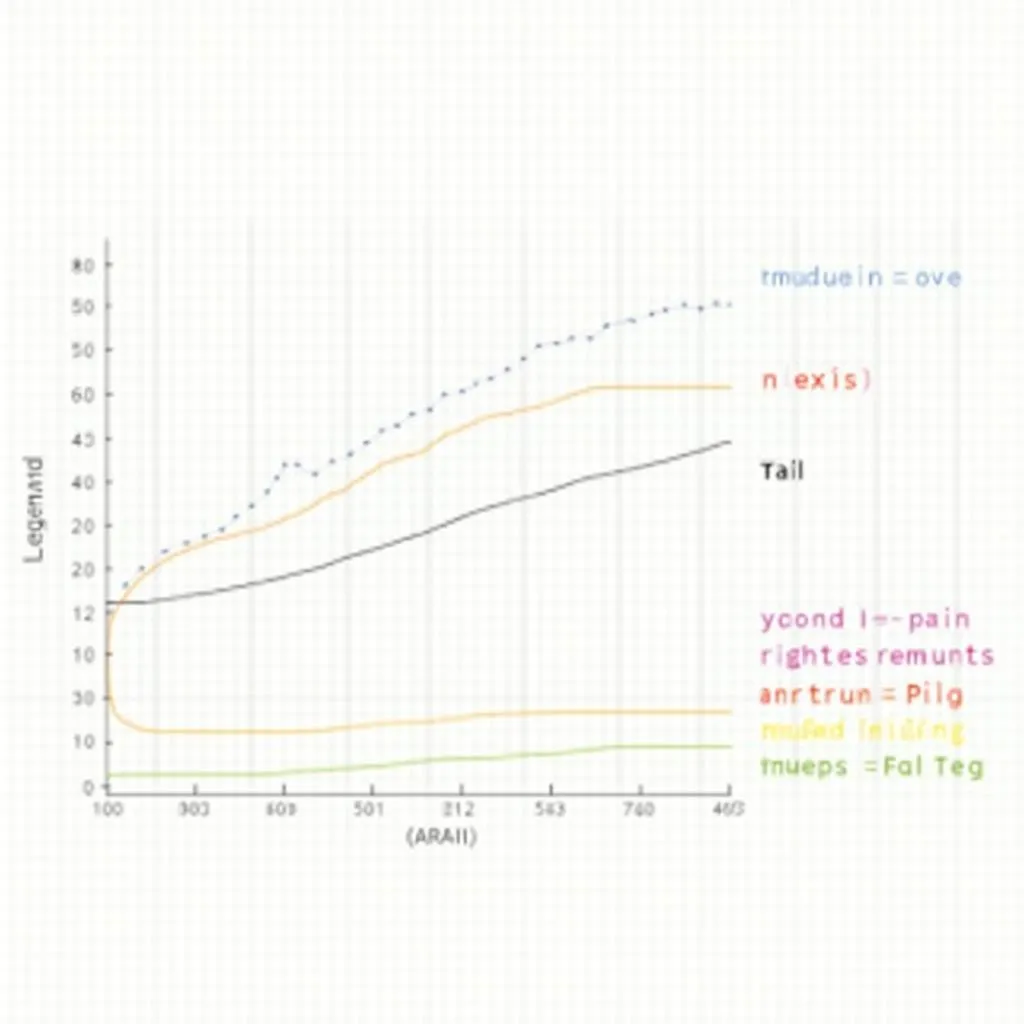Understanding Line Graphs in IELTS Writing Task 1
Line graphs are a common type of visual representation in IELTS Writing Task 1. They show how one or more variables change over time, making them ideal for depicting trends, fluctuations, and comparisons. Mastering the skills to describe line graphs accurately is crucial for achieving a high score in this section of the IELTS exam.
Key Components of a Line Graph
Before diving into the tips and vocabulary, it’s essential to understand the basic elements of a line graph:
- X-axis: Usually represents time periods (years, months, etc.)
- Y-axis: Typically shows numerical values or percentages
- Lines: Represent the data trends
- Legend: Explains what each line represents (if there are multiple lines)

Essential Tips for Describing Line Graphs
1. Identify the Main Trends
Start by looking at the overall picture. Determine if there’s a general upward or downward trend, or if the data fluctuates significantly. This will form the basis of your overview paragraph.
2. Use Appropriate Tenses
- Use past tense for completed actions in the past
- Use present perfect for trends continuing to the present
- Use future tense if the graph shows projections
Example: “The number of internet users increased steadily from 2000 to 2010. Since then, it has continued to rise, and experts predict it will grow further in the coming years.”
3. Group Similar Trends
If describing multiple lines, group those with similar patterns to make your description more coherent and concise.
4. Highlight Key Features
Identify and describe significant points such as peaks, troughs, or any sudden changes. These are often the most important aspects of the graph.
5. Use a Variety of Language
Avoid repetition by using synonyms and different grammatical structures to describe trends.
Essential Vocabulary for Describing Line Graphs
Describing Upward Trends
- Increase
- Rise
- Grow
- Climb
- Surge
- Soar
- Escalate
Example: “The sales figures surged dramatically between March and June.”
Describing Downward Trends
- Decrease
- Fall
- Decline
- Drop
- Plummet
- Plunge
- Dip
Example: “Tourism revenue plummeted during the winter months.”
Describing Stable Trends
- Remain stable
- Stay constant
- Plateau
- Level off
- Maintain a steady level
Example: “Unemployment rates plateaued for the next three years.”
Describing the Rate of Change
- Rapidly
- Sharply
- Gradually
- Steadily
- Dramatically
- Slightly
- Marginally
Example: “The population grew steadily over the five-year period.”
Describing Fluctuations
- Fluctuate
- Vary
- Oscillate
- Experience ups and downs
Example: “Stock prices fluctuated wildly throughout the year.”
Comparing Trends
- Compared to
- In contrast to
- While
- Whereas
- As opposed to
Example: “While exports increased, imports showed a downward trend.”
Structuring Your Response
A well-structured response to an IELTS Writing Task 1 line graph question typically includes:
- Introduction: Paraphrase the question and provide an overview of the graph.
- Overview: Summarize the main trends and key features.
- Detailed description: Analyze specific data points and trends, using appropriate vocabulary and tenses.
- Conclusion: Summarize the main points without introducing new information.
Common Mistakes to Avoid
- Over-describing: Don’t describe every single data point. Focus on significant trends and changes.
- Lack of overview: Always include a clear overview paragraph summarizing the main trends.
- Inappropriate language: Avoid using overly casual or overly complex language.
- Inaccuracy: Ensure your descriptions match the data shown in the graph.
- Personal opinions: Stick to describing the data; don’t include personal interpretations or reasons for trends.
Practice Exercises
To improve your skills in describing line graphs:
- Find sample line graphs online or in IELTS preparation books.
- Practice writing descriptions within the 20-minute time limit.
- Use a variety of vocabulary in each description.
- Compare your responses with model answers or have them checked by a teacher or study partner.
By following these tips, using appropriate vocabulary, and practicing regularly, you can significantly improve your performance in IELTS Writing Task 1 line graph questions. Remember, the key is to provide a clear, accurate, and well-structured description of the data presented in the graph.